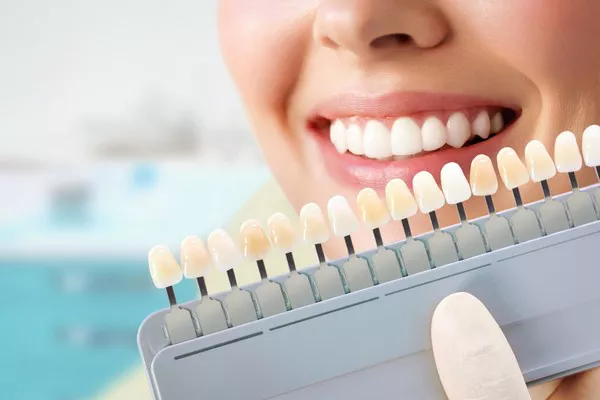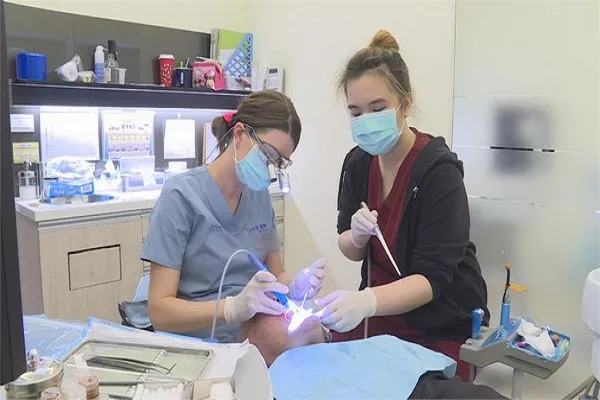In the ever-evolving landscape of oral health, understanding the root causes of dental caries and gingivitis is pivotal in maintaining a vibrant smile and overall well-being. This professional article delves into the intricate world of oral health, shedding light on the factors that contribute to dental caries and gingivitis, while also providing practical insights into preventive measures. Let’s embark on this journey to uncover the secrets behind these common dental issues.
Poor Oral Hygiene Practices: The Silent Culprit
At the epicenter of dental caries and gingivitis lies the often underestimated factor of poor oral hygiene practices. Neglecting the basics of brushing and flossing allows harmful bacteria to flourish, forming plaque and tartar. This initial neglect can evolve into a breeding ground for cavities and gum inflammation. According to the American Dental Association (ADA), a staggering 90% of adults experience some form of dental problems due to inadequate oral hygiene.
To counteract this, individuals should adopt a comprehensive oral care routine, encompassing regular brushing, flossing, and mouthwash use. Dentists recommend brushing twice daily with fluoride toothpaste, flossing at least once a day, and using an antiseptic mouthwash to eradicate lingering bacteria.
Dietary Habits: Unmasking the Sugar Menace
A sugar-laden diet is akin to an open invitation for dental caries. Sugars, when consumed, interact with bacteria in the mouth to produce acid. This acid, in turn, erodes tooth enamel, setting the stage for cavities. The World Health Organization (WHO) suggests that limiting the intake of free sugars to less than 10% of total daily energy intake can significantly reduce the risk of dental caries.
Delving deeper into dietary habits, it’s crucial to distinguish between naturally occurring sugars in fruits and added sugars found in processed foods. Opting for a diet rich in fruits, vegetables, and whole grains while minimizing the consumption of sugary snacks and beverages can be a game-changer in preventing dental problems.
Bacterial Onslaught: Understanding the Oral Microbiome
The oral cavity is teeming with a diverse community of bacteria, collectively known as the oral microbiome. While many of these bacteria are harmless, some can be detrimental to oral health. Streptococcus mutans, in particular, has earned a notorious reputation for its role in dental caries. These bacteria thrive on sugars, producing acid as a byproduct that erodes tooth enamel.
Maintaining a balanced oral microbiome is pivotal in preventing dental issues. Probiotics, known as “good bacteria,” can be incorporated into one’s diet or oral care routine to promote a healthy microbial balance. Additionally, regular dental check-ups can help detect and address imbalances in the oral microbiome before they escalate into more severe problems.
Inadequate Saliva Production: The Unsung Hero
Saliva, often overlooked in its role, plays a crucial part in oral health. It acts as a natural defense mechanism, neutralizing acids and aiding in the remineralization of tooth enamel. However, certain medications, medical conditions, and lifestyle factors can contribute to reduced saliva production, paving the way for dental caries and gingivitis.
Stimulating saliva production can be achieved through various means, such as staying hydrated, chewing sugar-free gum, and incorporating foods that require substantial chewing into the diet. Moreover, consulting with healthcare professionals to address underlying causes of reduced saliva production is essential for long-term oral health.
Genetic Predisposition: Decoding the DNA of Dental Health
Genetics plays a pivotal role in an individual’s susceptibility to dental issues. Some people may be genetically predisposed to weaker enamel or a more aggressive response to bacterial activity. Understanding one’s genetic makeup can empower individuals to tailor their oral care routines to address specific vulnerabilities.
Advances in genetic testing now allow for personalized dental care plans. By identifying genetic markers associated with dental caries and gingivitis, individuals can take proactive measures to mitigate their risk, such as opting for specialized toothpaste or more frequent dental check-ups.
In conclusion, the causes of dental caries and gingivitis are multi-faceted, intertwining elements of oral hygiene, diet, microbiology, saliva production, and genetics. Armed with this knowledge, individuals can proactively engage in preventive measures to safeguard their oral health. Remember, a healthy smile is not just a cosmetic asset but a reflection of overall well-being. Regular dental check-ups, coupled with a holistic approach to oral care, are the cornerstones of a radiant and enduring smile.
Related Links:
What causes gum pain and swelling?
What does a gum graft look like while healing?
What is the first sign of gum disease?





























